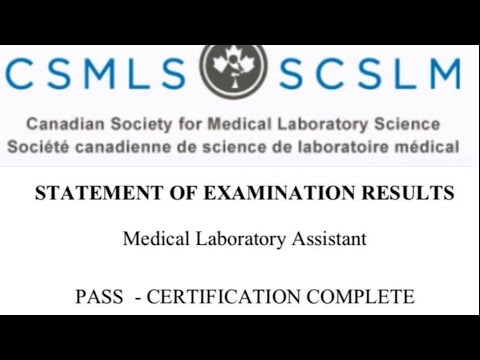What Does a Medical Assistant Do?
Contents [show]
Medical assistants are important members of the healthcare team who perform a variety of duties to keep the office running smoothly. But what exactly does a medical assistant do? Let’s take a closer look.
Checkout this video:
Job Description
A medical assistant is a vital member of the healthcare team. They perform a variety of clinical and administrative tasks to support the work of physicians and other medical professionals.
Medical assistants are trained in a variety of skills, including taking and recording medical histories, measuring patients’ vital signs, giving injections, preparing patients for examinations, and performing basic laboratory tests. In some states, they may also be allowed to assist with more invasive procedures, such as removing sutures or changing dressings.
In addition to their clinical duties, Medical assistants also play an important role in the administrative side of healthcare. They may schedule appointments, maintain medical records file insurance claims, and handle billing and coding tasks.
Duties and Responsibilities
Medical assistants are trained to perform many administrative and clinical duties. Their responsibilities vary from state to state, but there are many common duties that most medical assistants perform on a daily basis.
Clinical duties:
-Taking and recording patients’ vital signs, such as blood pressure and weight
-Drawing blood and performing lab tests
-Assisting with patient exams
-Giving injections
-Scheduling appointments
Administrative duties:
-Answering phones
-Greeting patients
-Scheduling appointments
-Filing insurance forms
-Billing patients
Skills and Qualifications
To be a successful medical assistant, you need certain skills and qualifications. The skills that are necessary for this position include strong interpersonal skills, excellent communication skills, the ability to type and use computers, strong organizational skills, and the ability to handle confidential information. The qualifications that are necessary for this position include a high school diploma or equivalent, completion of a medical assistant training program, and certification from an accredited organization.
Education and Training
Medical assistants complete administrative and clinical tasks in the offices of physicians, hospitals, and other healthcare facilities. Their duties vary with the location, specialty, and size of the practice.
Most medical assistants have postsecondary education such as a certificate. However, some states require medical assistants to be licensed or certified. Employers generally prefer to hire candidates who have formal education in medical assisting.
Most programs take about 1 year to complete and lead to a certificate or diploma. Some community colleges offer 2-year programs that lead to an associate’s degree in medical assisting.
Salary and Job Outlook
Medical assistants are in high demand and enjoy great job prospects. According to the U.S. Bureau of Labor Statistics (BLS), employment of medical assistants is expected to grow 23% from 2019 to 2029, much faster than the average for all occupations. The growth of the aging baby-boom population will continue to spur demand for preventive medical services, which are often provided by medical assistants. As a result, opportunities should be plentiful for those who have completed formal education and training programs.
Certification
There are several agencies that offer certification for medical assistants, but not all states require certification. Most employers prefer to hire certified medical assistants, however. The two main organizations that offer certification are the American Association of Medical Assistants (AAMA) and the National Healthcare Association (NHA).
Advancement Opportunities
While most medical assistants enter the field with a high school diploma, some have completed postsecondary medical assisting programs. Employers prefer to hire those with formal training. Medical assistants can advance in their careers by taking on additional responsibilities, such as management roles, or by completing a formal education program to become a Registered Medical Assistant (RMA) or certified medical assistant (CMA). Some states allow medical assistants to perform basic laboratory tests and X-rays under the supervision of a licensed healthcare professional.
Working Conditions
Medical assistants work in a variety of medical settings, including physicians’ offices, hospitals, and clinics. They work alongside other medical professionals, such as physicians, nurses, and medical transcriptionists Most medical assistants work full time. Some work evenings or weekends to accommodate the schedules of their patients.
Medical assistants typically do the following tasks:
-Take patient histories and record vital signs
-Prepare patients for examination
-Assist the physician during examinations
-Schedule patient appointments
-Arrange hospital admissions and laboratory services
-Handle correspondence
-Bill patients and insurance companies
What Employers are Looking for
When it comes to looking for a job as a medical assistant, you will want to keep in mind what employers are looking for. There are certain skills and qualities that employers will be on the lookout for when reviewing resumes and interviewing candidates. Here are some of the things that employers will be looking for:
-The ability to multitask: Medical assistants need to be able to juggle multiple tasks at once. They need to be able to handle patients, paperwork, and other tasks that come their way.
-Good people skills: Medical assistants need to be able to deal with patients who may be in pain or under a lot of stress. They need to be able to put people at ease and make them feel comfortable.
-Attention to detail: Medical assistants need to pay attention to detail in order to make sure that they are doing things correctly. This is important when it comes to dealing with patients’ Medical records and other sensitive information.
-Good organizational skills: Medical assistants need to be organized in order to keep track of patients’ records, appointments, and medications. They need to be able to stay on top of things so that the office runs smoothly.
If you have these skills and qualities, then you will likely be a successful medical assistant. Keep them in mind when you are applying for jobs and during interviews.
Medical Assistant Job Trends
Medical assistant job trends are positive, with the profession growing much faster than average. In fact, the Bureau of Labor Statistics projects that the medical assistant profession will grow by 29% between 2016 and 2026. This growth is being driven by an aging population, who will need more medical care, and by an increase in the number of medical procedures being performed. With this growth comes more opportunity for medical assistants.







